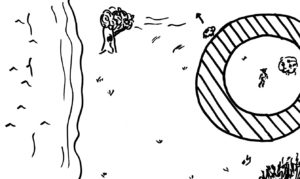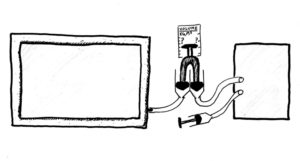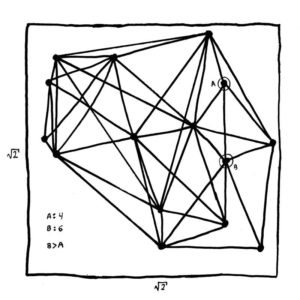This challenge considers an upset kangaroo making a series of discrete jumps in order to retaliate, and thus involves trigonometry.

Red Kangaroos in Australia compete with sheep for food. Sheep is grazing when it bumps into Kangaroo. The kangaroo wishes to learn the sheep some respect by either pummelling it, or pushing it into a nearby pond. Sheep wants to escape Kangaroo, but is slower than Kangaroo. However, Kangaroo is only capable of moving in jumps. Ergo, if Sheep stays far enough away to avoid pummelling, but too close for Kangaroo to jump, it is safe, and thus can avoid retribution indefinitely. Precisely formulated:
- Kangaroo can jump up to 8 meters
- Kangaroo cannot jump fewer than 5 meters
- Kangaroo can jump at most fource per second
- Kangaroo can pummel the sheep they are within 1 meter
- Sheep can flee at 10 meters per second
- Sheep can flee for 1 second before before Kangaroo pursues
- There is a nearby pond, a perfect circle and 100 meters in radius
- Sheep does not like swimming or being pummelled;
- Kangaroo wishes to punish Sheep for perceived slight
Therefore, the challenge is thus: what is the maximum distance from the pond from which Kangaroo can punish Sheep?







